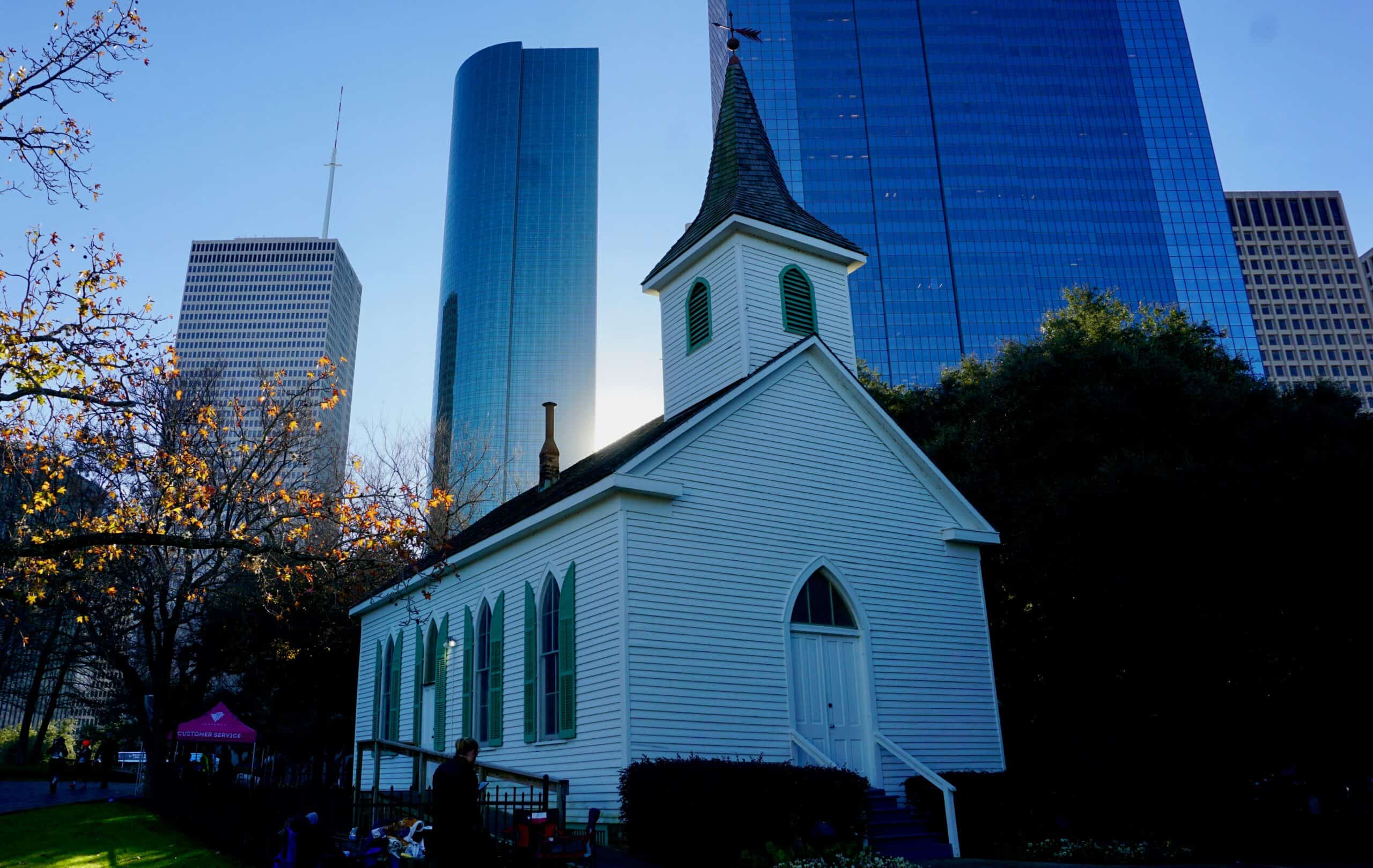Church Facilities That Further The Mission

Not long after World War II, Winston Churchill stood in front of the English Parliament and said something that still sticks with us today: “We shape our buildings, and afterward our buildings shape us.” He was talking about rebuilding the House of Commons, which had been destroyed in the war—but his point goes way beyond architecture. Churchill knew that the design of a space affects how people think, feel, and live. And if that’s true for government buildings, it’s certainly true for the places where the church gathers.
We believe the spaces where churches meet have a big impact on their ministry. That’s why it’s important to make sure your meeting space fits the mission God’s given you.
A lot of church planters feel pressure to find a building of their own. Maybe it’s because having a permanent space seems to legitimize what they’re doing in the eyes of the community. Or maybe they’re just tired of the weekly grind of setting up and tearing down. And while those feelings are totally understandable, we often remind them: the early church didn’t have buildings for 300 years and the movement didn’t slow down one bit. They stayed laser-focused on making disciples, not property maintenance.
Of course, owning a building can be a blessing—but it’s not without its headaches. That’s why it’s so important to think through how your space is helping (or hurting) your mission. The right space can open doors to your neighborhood. But the wrong setup or mindset can just as easily close you off from the community you’re trying to reach.
What if your church’s gatherings weren’t limited to a sanctuary or living room? What if worship and Bible studies happened in subway stations, coffee shops, or other places people already hang out? Just imagine the visibility. And the impact.
The truth is, all over the world, churches are growing in places where they don’t own a single building—places like China, India, and Iran. For too long, the Western church has been known more for its buildings than its people. It’s time to flip that script.
This newsletter is full of ideas and resources to help you think outside the box when it comes to your church’s physical space. We hope it encourages you to get creative and stay focused on the mission. Let’s lead the way. Enjoy!
-Patrick Bradley, Director of Operations
June 2025 – Content
- 10 Popular Portable Church Venues
- A Better Way To Utilize Your Space
- Reimagining Church Real Estate
- Facility Tour Checklist
- Church Planter Residency – New $5,000 Grant!
10 Popular Portable Church Venues

One common complaint we hear from church planters on a regular basis centers on the lack of public gathering spaces in their community. They drive around their city and struggle to find spaces that align with their vision and fit their budget. However, we’ve found that by looking a little harder, thinking a little bit more creatively, and getting help from friends who work in real estate, our church planters end up finding multiple potential gathering space options that they didn’t know about.
To help you find portable church gathering space in your community, read 10 Popular Portable Church Venues: Pros and Cons For Reproducing Churches by Sean Cronin, our very own P4P Training Lead.
A Better Way To Utilize Your Space

If your church has a building, are you dreaming about how to be the best steward of it? If you are, one possible option is turning the space into a public coworking space like Shoal Creek Community Church and Oak Leaf Church have done. Shoal Creek Community Church transformed its underutilized space into The CO-OP at Shoal Creek, a coworking facility offering private offices, shared workspaces, and meeting rooms. This initiative not only maximized the use of the church building, but also fostered a vibrant community of entrepreneurs and remote workers. The collaboration between the church and the coworking space has led to a shared revenue model and has attracted various businesses, including a private school and a music/art studio.
In Canton, GA, The Oak House operates within the premises of Oak Leaf Church, providing coworking spaces to the local community. This setup allows the church to engage with professionals during the week, creating opportunities for ministry and community building in a non-traditional setting.
Could utilizing your church building as a coworking space be a blessing to your community and help fund your ministry?
Reimagining Church Real Estate

Many church plants start gathering in homes following the example of the church in Acts. Talk to any church planter, or read church planting books, and plenty tell stories of how their church started with a handful of people meeting in someone’s living room. Eventually though, most of those church planters sense the need to move their church gatherings to bigger, more public spaces to help them reach more people. That’s been the common paradigm in the United States over the last several decades.
But is that always the best path forward? Could we also imagine a future where some planters follow that path while others are sent out specifically to spark networks of house churches? Or where entrepreneurial leaders team up with business-minded believers to co-own spaces that serve the community all week long, not just on Sundays? The Church in the US could embrace the genius of “both/and”.
And overall, we think it’s time to stretch our imaginations when it comes to where churches gather and how we steward space. Buying or building facilities that sit mostly empty during the week can quietly siphon off resources that might otherwise fuel disciple-making and church multiplication. But that doesn’t mean buildings are bad—it just means we need to ask better questions about how they’re used.
There’s room for a variety of models. The opportunity is to align each one with the mission. So let’s stay curious. Let’s keep innovating. Let’s agree that it’s going to take all kinds of churches to reach all kinds of people.
If you’re ready to dig deeper into this conversation, check out Reimagining The Future of Church Real Estate by Nick Bonner.
Facility Tour Checklist

Renting worship space in the community can open doors to incredible ministry opportunities. It allows church planters to stay flexible, keep costs down, and focus resources on people rather than property. Plus, being in a shared or public space often creates natural connections with the neighborhood. For instance, when a church meets in a school, it has built-in community service and outreach opportunities with that school. Also, meeting in a familiar, public space like a movie theater or school can be less intimidating for people who haven’t attended a church service in a long time. Or ever.
If you’re considering where to gather for worship, weigh the pros and cons of each potential space. Put yourself in the shoes of the people you’re trying to reach. Ask how meeting in those spaces might affect your ability to connect with them. Ruthlessly ask yourself whether the facility aligns with your church’s vision. Use our Facility Tour Checklist to help you evaluate each space. Throughout the process, pray for God to lead you to the right space and grant you favor with the people managing the facility.
Church Planting Residency – New $5,000 Grant!

As a church, you want to equip the next generation of church planters with the tools, structure, and support they need to thrive. You know the value of strong training—both for the planter and the churches they’ll plant.
We know planting a church is hard enough. The thought of starting a residency program from scratch can feel overwhelming.
- Where do you start?
- Who will lead the program?
- How do you create the curriculum?
- Who will coordinate the logistics and manage the timeline?
- How can you afford it without taking away from other ministry priorities?
At Passion for Planting, we’ve already done the hard work of creating a comprehensive residency program. We offer a turnkey Distance Church Planter Residency that helps you train future planters without the hassle of building your own program from scratch. And they don’t even have to move across the country!
- No Need to Reinvent the Wheel – Skip the time and cost of designing a residency program
- Ownership Without the Overhead – Offer a residency that’s “Powered by Passion for Planting” but feels like your own
- Focus on What Matters Most – We’ll handle the logistics and training, so you can stay focused on local ministry and disciple-making
Whether you’re an established church or a church plant in progress that wants to ‘plant pregnant’, we can help you offer a residency to your planters. We’re now accepting applications for our 2025-2026 distance residency cohort, which starts in September. All US planters who complete the residency will be eligible for a $5,000 cash grant for their church plant. Contact us today about setting up a church planting residency at your church!
